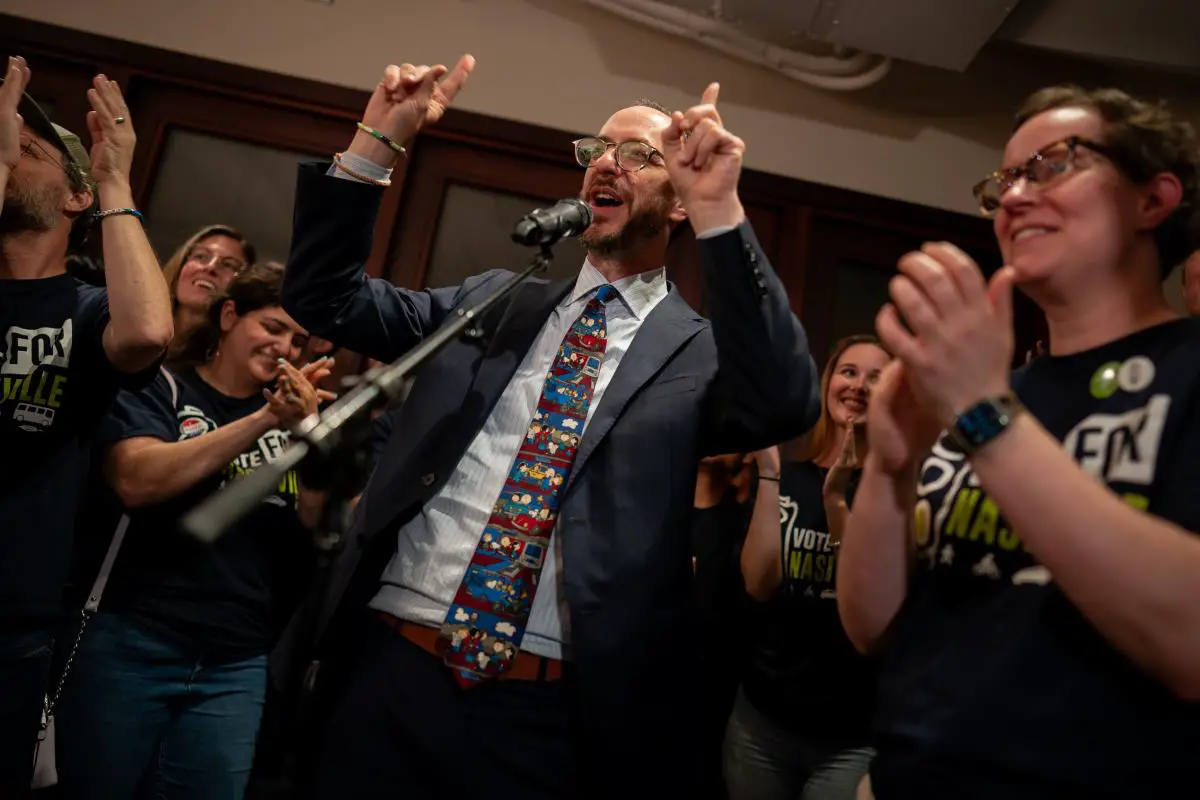Nashville voters approved on Tuesday a $3.1 billion transportation plan that will fund improvements to the city’s bus system, sidewalks, traffic signals and more.
The Choose How You Move transportation improvement plan has been a hallmark of the administration of Mayor Freddie O’Connell, and it was overwhelmingly approved at the polls.
“Now for the next generation, we will all enjoy the things we deserve: sidewalks, signals, service and safety,” O’Connell said in a speech Tuesday, referencing the plan’s four primary improvement areas.
The approval means Davidson County’s sales tax will increase by half a cent, which will go directly to funding the transit plan. The increase will go into effect Feb. 1 and put Davidson County in line with surrounding countries like Williamson, Wilson, Rutherford, Dickson and Maury, which all have a combined 9.75% sales tax.
Here’s everything to know about the transit improvements coming Nashville’s way.
What are the transit improvements in the plan?
The transportation improvement plan contains four categories: Service, signals, sidewalks and safety. Expanded WeGo bus service (including added routes, more neighborhood transit centers and 24/7 service) is the most costly portion of the plan.
Improvements include:
-
86 miles of new or upgraded sidewalks
-
592 smart signals that can improve traffic flow
-
285 upgraded bus stops
-
12 strategically located transit centers
-
54 miles of high-capacity transit corridors, including bus rapid transit routes
-
80% increase in total WeGo bus service hours, along with 24-hour service and decreased wait times
How will the transit plan apply to my neighborhood?
The Choose How You Move campaign published an interactive map of Davidson County that shows the transportation improvements, sorted by neighborhood.
Traffic signal upgrades are largely concentrated along high-use roads from the edge of the county into downtown, while new WeGo routes offer additional connections between neighborhoods. Transit centers are proposed in West Nashville, SoBro, Madison, Donelson, Antioch, Bellevue, on Nolensville and Dickerson pikes, and near Tennessee State and Vanderbilt universities.
Access the interactive map at transit.nashville.gov.
The transit plan’s proposed timeline
Immediate improvements would include:
-
WeGo bus service enhancements
-
Lighting and safety improvements
-
Early improvements to sidewalks, safety measures and traffic signals
-
A microtransit pilot program through WeGo Link, which partners with rideshare providers to offer subsidized fare to certain bus stops for riders in less-dense areas of the county
Within two years:
-
“Substantial” bus service improvements to hours and frequency
-
Sidewalk and upgraded signal installation continues
-
The first “Complete Street” project (which will include updates for pedestrians, cyclists, drivers and transit users) will be completed
Within five years:
-
More than 150 signals will be upgraded along with the Traffic Management Center
-
All-access corridors begin high-frequency bus service on West End, Charlotte Pike and between Elizabeth Duff Transit Center and South Broadway (through James Robertson Parkway, Rosa L. Parks Boulevard and Lafayette Street)
Within 10 years:
-
60 miles of sidewalks will be built
-
All-access corridors will begin high-frequency bus service on Murfreesboro Pike, Gallatin Pike and Clarksville Pike
-
Downtown, all-access corridors will provide high-frequency service on James Robertson Parkway linking the Elizabeth Duff Transit Center to the East Bank, and the East Bank to South Broadway via the Gateway Bridge
Within 15 years:
-
Nearly 600 traffic signals will be upgraded
-
78 miles of the Vision Zero high-injury network will have safety improvements
-
86 miles of new sidewalk will be complete
-
High capacity transit will be available on Dickerson Pike and Nolensville Pike, rounding out service on Nashville’s 10 busiest roadways


What will the transit plan mean for Nashville?
To illustrate what the transit improvement plan could mean for the city, The Tennessean examined how the plan would change Dickerson Pike.
To better understand how the WeGo bus system currently operates, The Tennessean also sent a reporter along the city’s busiest route for a week.
What is the effect on sales taxes in Nashville?
The transit referendum included a half-cent sales tax bump for Davidson County, increasing the combined state and local sales tax from 9.25% to 9.75%. Nashvillians pay 6.25% in combined state and local sales tax on most groceries (except prepared foods). The half-cent increase brings that to 6.75%.
The tax increase takes effect Feb. 1.
The tax increase will cover around 40% of the plan’s total cost, with the remainder expected to be funded through fares, bonds, and state and federal programs.
Williamson, Wilson, Rutherford, Dickson, Maury, Robertson and Hickman counties all have a combined 9.75% sales tax.
How will the sales tax increase impact my wallet?
According to an analysis using MIT’s cost of living calculator, one adult can expect to pay $4 more per month in tax on groceries and other household goods. A family of four can expect to pay $10 more per month.
This article originally appeared on Nashville Tennessean: Nashville transit plan approved: What to know about tax, improvements


Leave a Comment